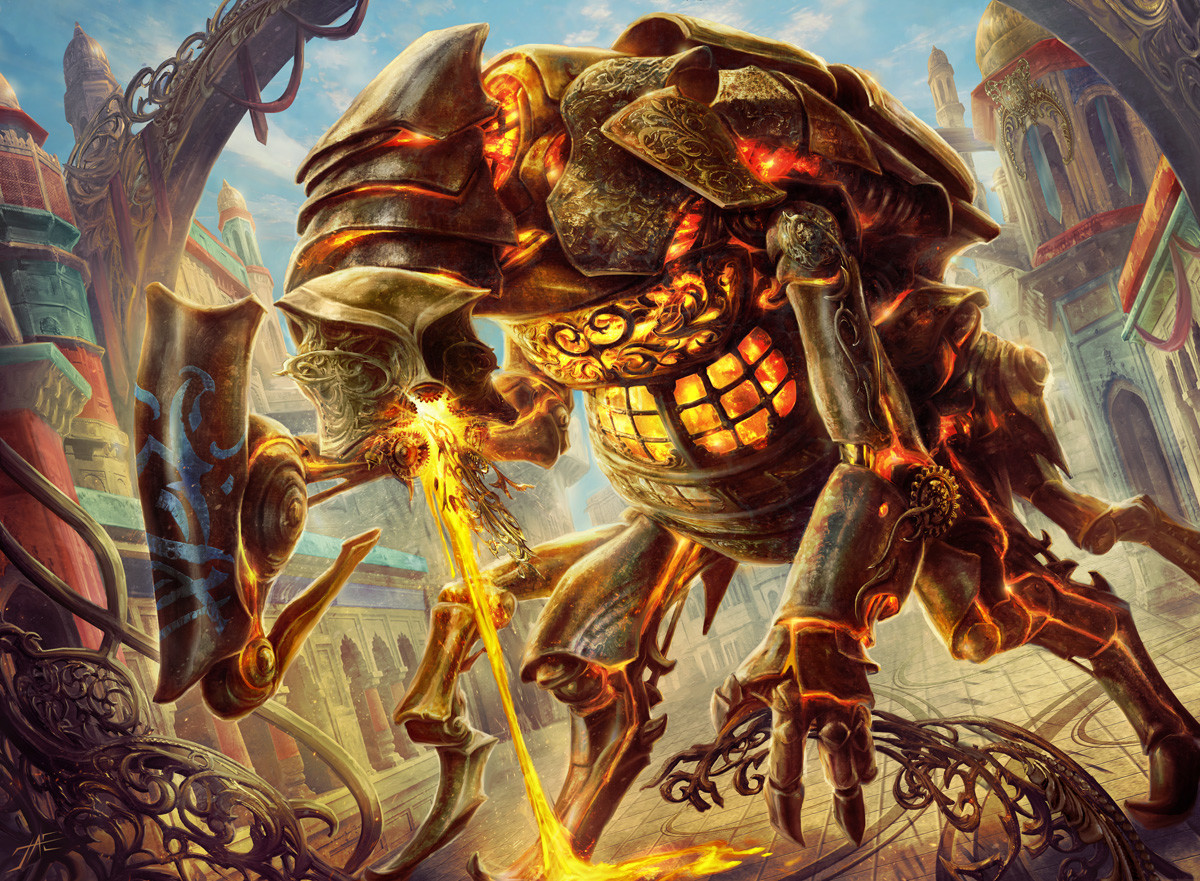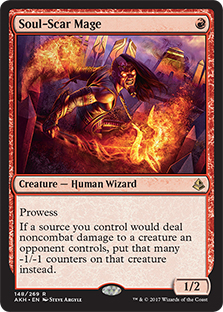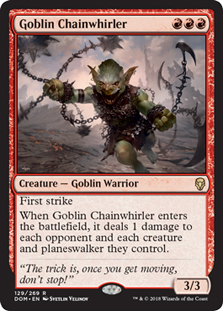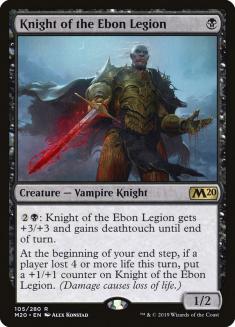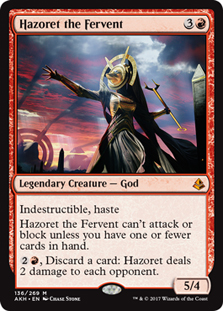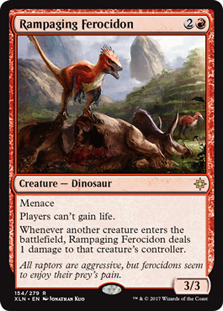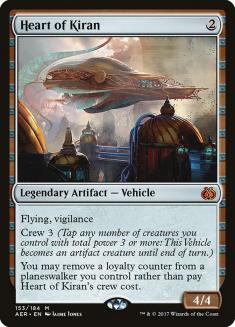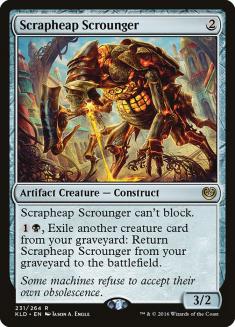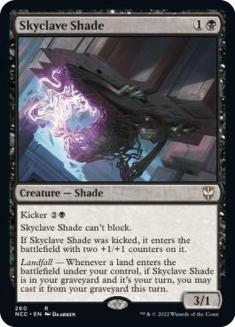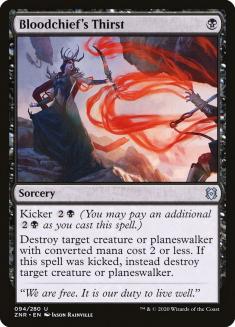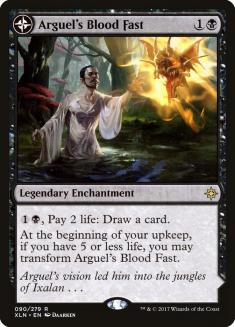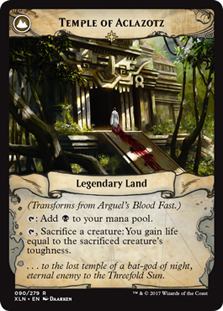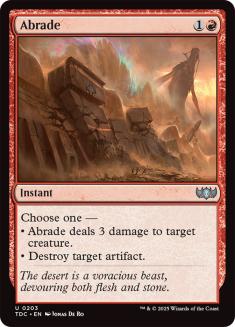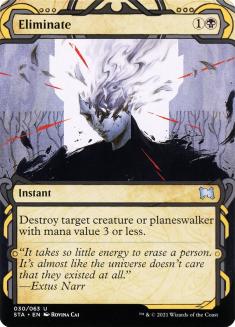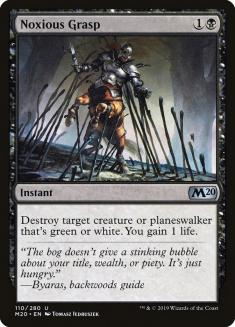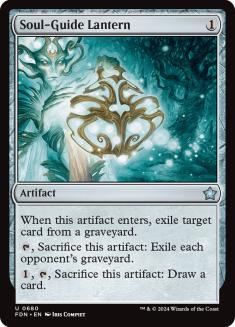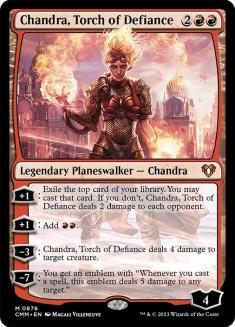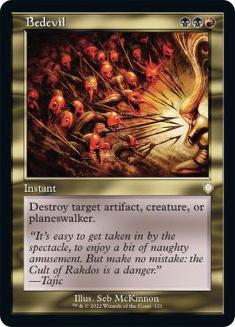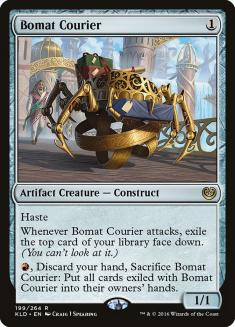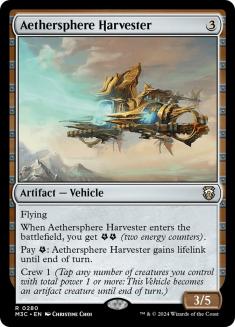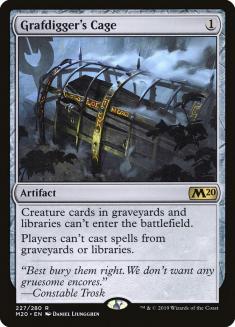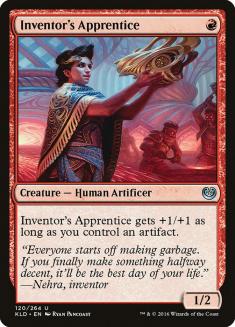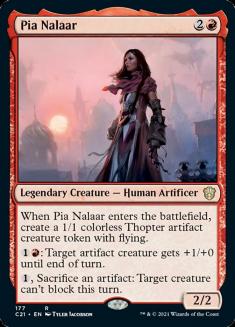Leading into the Zendikar Rising Championships, I advocated for Rakdos Sacrifice. While that deck is still what I’d play for a big tournament, there’s another Rakdos deck I’ve been working on that has been quite good. As is the case for most Historic decks, its roots stem from an older Standard format.
Creatures (23)
- 3 Pia Nalaar
- 4 Bomat Courier
- 4 Scrapheap Scrounger
- 4 Inventor's Apprentice
- 4 Walking Ballista
- 1 Glorybringer
- 2 Hazoret the Fervent
- 1 Rekindling Phoenix
Planeswalkers (3)
Lands (24)
Spells (10)

This is secretly one of the best decks I’ve ever played. It was the perfect example of an aggro deck that could transform into a midrange deck, easily shifting the paradigm against matchups that were traditionally difficult. Grand Prix Seattle was toward the end of that format’s life cycle, so it didn’t get much attention.
Most of the cards from that deck have a pedigree in Historic already, plus we get some significant upgrades, namely Thoughtseize. Building the deck with a red base is the traditional way to do things, thanks to the one-drops and Goblin Chainwhirler. However, neither of those things excite me at the moment. Goblin Chainwhirler has its moments, especially alongside Soul-Scar Mage, but the two individually are rather weak in Historic at this time.
The biggest level up moment was when the deck shifted toward being black-based rather than red-based. Nick Prince was playing Soul-Scar Mage as an additional one-drop but the card didn’t impress me. Having a low mana curve makes Bomat Courier, Hazoret the Fervent, and Castle Locthwain stronger, so I would have been happy with another one-drop. Soul-Scar Mage didn’t do enough, mostly because we were playing spot removal and very few sources of prowess.
Nick mentioned Knight of the Ebon Legion and I knew it was the perfect fix. Not only was it a one-drop that scaled up later, it could crew Heart of Kiran in a pinch and made casting Turn 1 Thoughtseize much easier.
Another huge upgrade came from leaning on Hazoret the Fervent instead of Chandra, Torch of Defiance, although that one came from practice. Hazoret sticks around most of the time and is much better at winning games than Chandra. That’s a stronger plan in pre-sideboard games than trying to keep Chandra alive.
Moving toward Rampaging Ferocidon was also helpful. As the amount of aggro decks wanes, Bonecrusher Giant becomes less important. Preventing the lifegain from Uro, Titan of Nature’s Wrath and everything else can be very helpful. It’s also quite the clock against Mono-Red Goblins and prevents them from going off to some degree.
Creatures (22)
- 4 Bomat Courier
- 4 Scrapheap Scrounger
- 3 Hazoret the Fervent
- 4 Rampaging Ferocidon
- 4 Knight of the Ebon Legion
- 2 Bonecrusher Giant
- 1 Skyclave Shade
Planeswalkers (1)
Lands (23)
Spells (14)

Rakdos Vehicles is solidly Tier 2 in Historic but so is everything else that isn’t Sultai Midrange or Rakdos Sacrifice. The appeal of a deck like this is that you’re proactive, disruptive, have difficult to remove permanents, and plenty of card advantage.
Surprisingly, I didn’t like Thoughtseize as a maindeck four-of. Most of that stemmed from the having to play a bigger mana curve and cards that are dead in several matchups. Drawing one Thoughtseize in Game 1 is fine but drawing multiples alongside a dead card leads to too many anemic draws.
If we can plan on Heart of Kiran dying, playing four copies is reasonable. Given the metagame at the Zendikar Rising Championship, I’m not sure that’s the case. Playing three seems like a good choice for now. My GP Seattle decklist ended up cutting Heart of Kiran because it didn’t fit the nature of the sideboard plans but that’s less true here. We have plenty of creatures to crew, even in sideboard games.
In order to enable Heart of Kiran, we need to rely on three-power two-drops. Scrapheap Scrounger is the best but Skyclave Shade is a fine alternative. The instant-speed nature of the recursion is more important than anything Skyclave Shade can provide, even though it has some benefits of its own.
Bloodchief’s Thirst seems stronger than Fatal Push in this deck but a mix could be correct. Enabling revolt can be difficult. We have Bomat Courier but Fabled Passage isn’t ideal. Against matchups like Sultai Midrange or Azorius Control, where Fatal Push can be a dead card, Bloodchief’s Thirst has very relevant text. I’ve split the rest of the removal spells because there isn’t a clear best option.
Rakdos’s manabase is severely lacking compared to other color combinations but we make it work. Canyon Slough was something I was fine playing in a format that was less powerful but isn’t ideal here. We could make use of Fabled Passage, Spire of Industry, or Aether Hub but they each have significant issues. Thankfully, we’re mostly black cards and artifacts, so the mana requirements aren’t strict.
Arguel’s Blood Fast is often the best sideboard card. One of the best ways to bully Sultai Midrange last weekend was with permanents that were difficult to remove. They had Aether Gust and some spot removal but most lists weren’t playing Mythos of Nethroi. Maybe that changes now but an enchantment was basically unkillable. I’m shocked that Sultai decks aren’t playing it for mirror matches.
There’s some anti-synergy with Rampaging Ferocidon and Aethersphere Harvester but if you have both on the battlefield, you probably aren’t complaining.
The results from the Zendikar Rising Championships made it easier for Rakdos Vehicles to succeed. Once Kaladesh Remastered was released on Arena, the metagame was all over the place. You needed answers to Mono-Red Aggro, Colorless Ramp, and Sultai Midrange, which stretched you too thin.
Matchup Guide
VS Sultai Midrange
Out (on the play):
In (on the play):
Out (on the draw):
In (on the draw):
This is obviously going to be a difficult matchup but you have the tools to beat them.
On the play, try to keep up the pressure while flanking them with difficult to remove permanents. They won’t be able to kill everything, so you need to rely on slowly closing off their outs. That usually involves removing their threats and stopping them from getting any traction. You can’t always rely on cards like Arguel’s Blood Fast or Chandra, Torch of Defiance to necessarily carry you because they actually have a clock. Noxious Grasp is important for keeping their threats in check while you milk your card advantage.
They could have Shark Typhoon, Scavenging Ooze, Yasharn, Implacable Earth, or Elder Gargaroth in addition to Hydroid Krasis, Uro, and Nissa. They can be threat-dense if they want to be and that’s exactly what you don’t want to see.
Mardu Vehicles used to sideboard out Toolcraft Exemplar and the same thing applies here. In sideboard games, you’ll face more removal and disruption, making Toolcraft Exemplar fairly weak. Knight of the Ebon Legion is similar, although it can stand on its own much better. For the most part, you don’t want to let your opponent get favorable trades with Fatal Push and you don’t want to overextend into sweepers. When you’re on the play, you can leverage the aggression easier.
A large black threat could be helpful, which is exactly what Brad Nelson and Andrea Mengucci used Doom Whisperer for. Aether Gust is fairly medium against my setup but I’ve had opponents who have kept it in against me as an answer to Hazoret the Fervent.
VS Rakdos Sacrifice
Out:
In:
If they have Collected Company, you’ll want the Grafdigger’s Cage.
Try to save your removal for Priest of Forgotten Gods and Mayhem Devil if you can. Witch’s Oven and Cauldron Familiar can be annoying but you have plenty of ways to shut it down. If you can keep them operating at a low base, your cards will be more powerful on average. They won’t be able to cobble together lethal damage in a timely manner and you’ll eventually chip damage them out.
Generally, if you have Rampaging Ferocidon, you’ll want to lean aggressive. If you have Aethersphere Harvester, you can afford to be more conservative.
VS Azorius Control
Out:
In:
If you can keep Teferi, Hero of Dominaria off the battlefield, you should be able to outdraw them with Bomat Courier and Castle Locthwain. Midrange and control decks use powerful permanents to carry them in Historic and this deck is very good at beating them at their own game.
VS Mono-Red Goblins
Out:
In:
I’m light on ways to fight this matchup but having a clock and disruption still gives you a solid chance. Despite Autumn’s incredible run with Goblins, I don’t foresee this deck becoming more popular.
VS Azorius Auras
Out:
In:
I wouldn’t be surprised if it was correct to bring in Arguel’s Blood Fast here as well. Once you remove their threats, you’ll be able to win at your leisure, so there’s very little need to be threat-dense.
There are other options for how to build the deck. As the metagame shifts, things like Rampaging Ferocidon might fall out of favor, so you have some flexibility there as well. When I started building the deck, I wanted to incorporate Inventor’s Apprentice because it seemed like the strongest available one-drop but the supporting artifacts weren’t good enough.
We used to use Pia Nalaar and Aethersphere Harvester to get there, which could in turn support Unlicensed Disintegration and Spire of Industry if you wanted them. Sadly, those cards aren’t what you’re looking for at the moment. You need a little more power and a little more flexibility.
The white splash is an option and we saw Mardu Vehicles perform well immediately following Kaladesh Remastered‘s release. Some folks have even been working on Orzhov versions of the deck, which I could potentially get behind. Skyclave Apparition and Gideon Blackblade are powerful enough for Historic, although Toolcraft Exemplar has many of the same issues as Inventor’s Apprentice.
We desperately need Thraben Inspector or something similar. Walking Ballista’s presence used to carry the deck in Standard but doesn’t exist in Historic for power level reasons, which is understandable.
Bomat Courier and Scrapheap Scrounger will be format staples for a long time, so there’s little fear in investing in them. Maybe Heart of Kiran won’t be the final form but those two cards will be the backbone of most aggressive decks for years to come. They’ll only get better with time.

